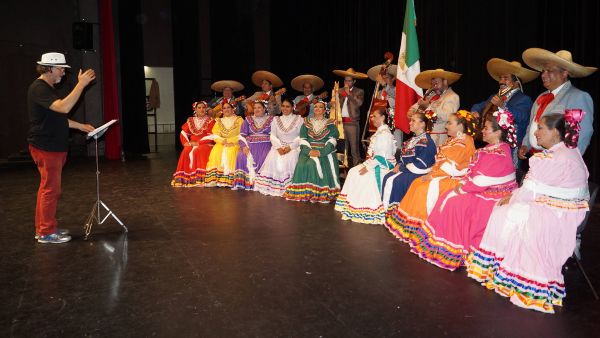San Francisco, California - Urs Leonhardt Steiner knew he had to take a stand. After months of hearing President Trump's xenophobic rhetoric - particularly his maligning of the Mexican people - the music director of the Golden Gate Symphony Orchestra and Chorus envisioned a concert combining classical and Mexican folk music to build a cross-cultural bridge at a time of deep divisions.
"I wanted to make a statement that Mexico has a very high level of culture, and they have a bunch of beautiful music," he says.
Steiner joined forces with local musician, conductor, and educator Martha Rodriguez-Salazar to plan íViva Mexico! Beyond Border Walls, a concert taking place Nov. 5 at San Francisco's Herbst Theatre. In addition to musicians from Golden Gate Symphony Orchestra and Chorus, the event features Coro Redes y Cantos de Chapala, a traditional folk chorus from the Mexican state of Jalisco.
 |
íViva Mexico! celebrates "the richness of Mexican music - not only the classical music but the folk music, and not only famous composers but composers who are not well known," says Rodriguez-Salazar. She serves as guest conductor for the concert, which, for her, is personally significant.
"I'm a Mexican living in the Bay Area for over 20 years," she says. "I'm a teacher and I work with a lot of Latino community. I see the impact that discrimination and this attitude affects my students of all ages: elementary, high school, adults, seniors."
With the concert, Rodriguez-Salazar hopes to inspire understanding and curiosity. "The gap between the two cultures, Mexico and the U.S., can get narrower and smaller the more there is education and music," Rodriguez-Salazar says.
Steiner says he already sees that gap narrowing in rehearsal - he was heartened to watch musicians from Coro Redes y Cantos de Chapala and Golden Gate Symphony Orchestra and Chorus helping each other learn the music from the program, despite linguistic and cultural barriers. He's already in talks with Moises Real Gˇmez, the director of Coro Redes y Cantos, about doing a sister concert in Mexico. The show's program has also inspired Steiner to incorporate composer Eduardo Gamboa's music into future Golden Gate Symphony shows.
Though classical music audiences in San Francisco typically skew older, white, and sometimes conservative, Steiner says that he's not worried about pushback for the politically charged show. "I am not afraid in the least," he says. "I would welcome the discussion if I would have the chance with someone who wanted to talk to me about it. I'm 63 years old, I've had lots of controversial projects, I stir the pot a little bit. It always gives me the opportunity to reach out to people who don't understand my ideas."
Originally published on KQED.org, a community-supported alternative to commercial media that, since 1994, has provided the people of Northern California with a place to interact, learn more, and connect with others on the issues and topics explored on radio and television.


